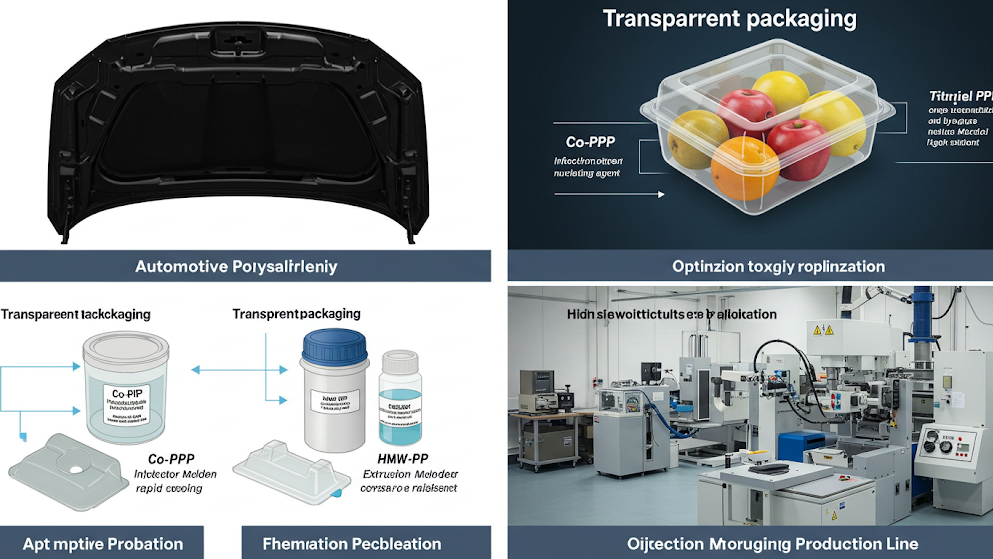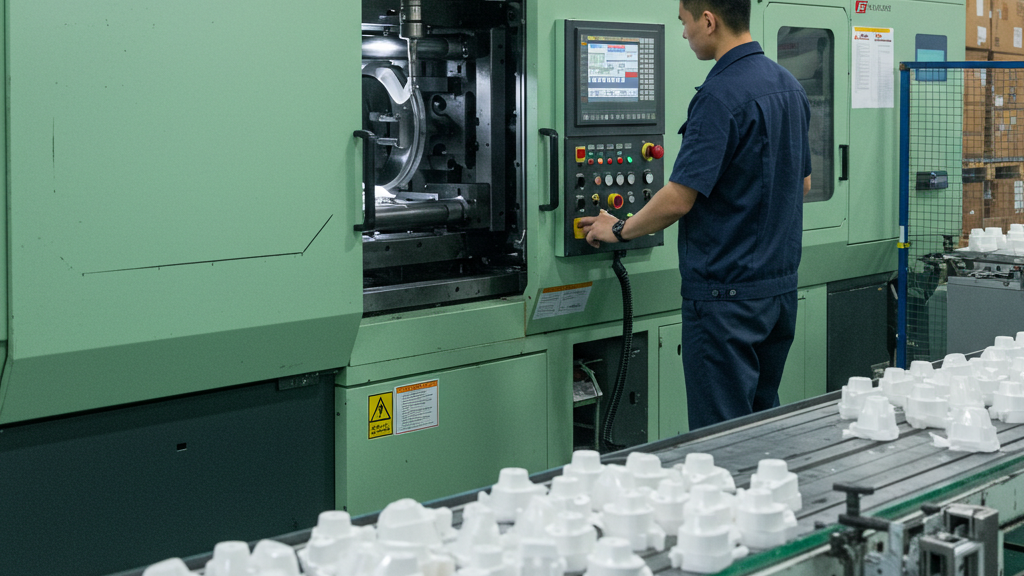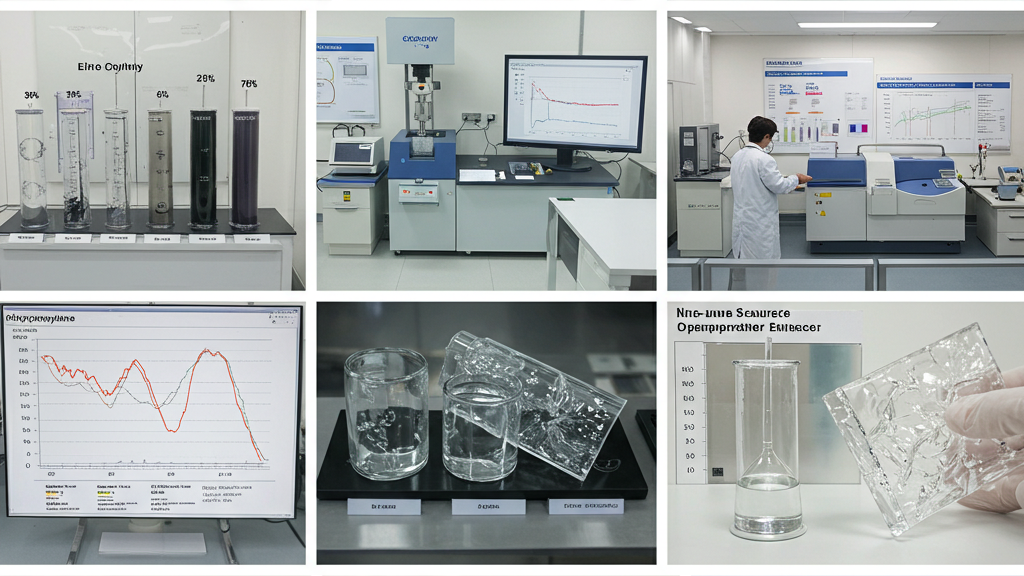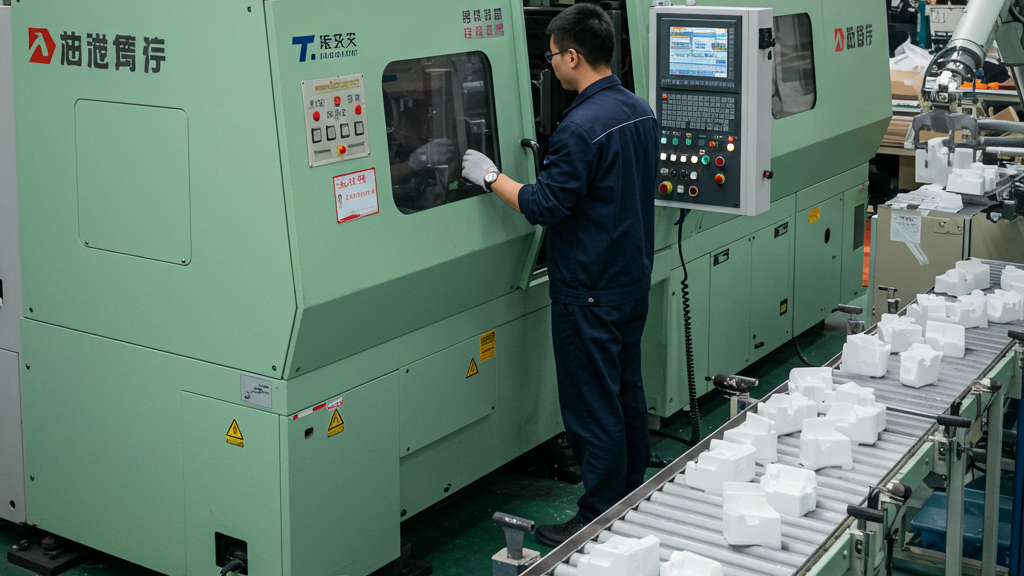
Polypropylene (PP), as an important general-purpose thermoplastic resin, has been widely used in industries such as automotive, packaging, and medical due to its excellent chemical stability, processability, and cost-effectiveness.
The properties of polypropylene are closely related to its crystallinity. By controlling crystallinity, the mechanical strength, heat resistance, and optical properties of polypropylene can be improved, thereby expanding its application scope. This article will explore the factors influencing the crystallinity of polypropylene and introduce several effective control methods.
How does the crystallinity of polypropylene specifically affect its properties?

The crystallinity of polypropylene, as a key parameter of its microstructure, acts like the “genetic code” of the material, profoundly influencing its macroscopic properties. From mechanical strength to optical transparency, even subtle changes in crystallinity can cause significant fluctuations in the performance of polypropylene.
- Mechanical Properties: Crystallinity affects the rigidity, strength, and toughness of polypropylene, requiring a balance to suit different applications.
- Thermal Properties: Increased crystallinity raises the melting point and heat resistance, making polypropylene suitable for high-temperature environments.
- Optical Properties: Crystallinity impacts transparency, with higher crystallinity reducing transparency, necessitating the addition of transparency-enhancing agents to improve it.
- Chemical Stability: Crystalline regions enhance chemical resistance, and higher crystallinity improves the material’s overall chemical stability.
What are the main factors affecting the crystallinity of polypropylene?

From cooling rate to molecular structure, the factors influencing the crystallinity of polypropylene are intricate, and their interactions form the “code” of material properties. Deciphering this code will enable us to better harness polypropylene, maximizing its potential across various fields.
- Cooling Rate: Cooling speed affects molecular arrangement; slower cooling increases crystallinity, while faster cooling reduces it.
- Nucleating Agents: Nucleating agents provide starting points for crystallization, promoting the process and increasing both crystallization rate and crystallinity.
- Comonomers: The type and content of comonomers influence the regularity of molecular chains, thereby affecting crystallinity.
- Molecular Weight: Molecular weight impacts the mobility of molecular chains; excessively high molecular weight reduces chain mobility, lowering crystallinity.
How to precisely control the crystallinity of polypropylene by adjusting these factors?

By skillfully regulating key factors such as cooling rate, nucleating agents, and comonomers, we can act like “sculptors” to shape the microstructure of polypropylene and endow it with the desired properties.
- Cooling Rate: By controlling the cooling speed, the arrangement of molecular chains can be adjusted, thereby influencing crystallinity.
- Nucleating Agents: The rational selection and use of nucleating agents can effectively promote crystallization, increasing both crystallization rate and crystallinity.
- Comonomers: Regulating the type and content of comonomers can alter the regularity of molecular chains, thereby controlling crystallinity.
- Molecular Weight and Stereostructure: Optimizing molecular weight and stereostructure can affect the mobility and regularity of molecular chains, thus regulating crystallinity.
Influencing factors and control of crystallinity of polypropylene
|
Influencing Factor |
Control Method |
Performance Impact |
| Cooling Rate | Slow/Fast Cooling | Rigidity, Strength, Toughness, Transparency |
| Nucleating Agent | Select Type, Control Dosage | Crystallization Rate, Optical, Mechanical Properties |
| Copolymer Monomer | Select Monomer, Control Content | Molecular Chain Regularity, Crystallinity, Flexibility |
| Molecular Weight | Control Polymerization Conditions | Molecular Chain Motion, Crystallinity, Processability |
Optimizing the Crystallinity of Polypropylene Based on Different Requirements
The crystallinity of polypropylene (PP) has a crucial impact on its properties. To meet the needs of various application fields, we need to optimize its crystallinity based on specific conditions. For example, in the automotive industry, to enhance the strength and heat resistance of components, we typically increase the crystallinity of polypropylene.
1.Improving Strength and Heat Resistance:By using slow cooling, selecting efficient nucleating agents, and employing isotactic polypropylene, the mechanical strength and heat resistance of polypropylene can be significantly enhanced.
2.Enhancing Transparency and Flexibility: Utilizing rapid cooling, transparent nucleating agents, and copolymerized polypropylene can effectively improve the transparency and flexibility of polypropylene.
3.Boosting Chemical Stability: Increasing the crystallinity and using high-molecular-weight polypropylene can significantly enhance its chemical corrosion resistance and long-term stability.
4.Optimizing Processing Performance:By controlling the molecular weight distribution, using nucleating agents, and managing the cooling rate, the processing efficiency of polypropylene and the quality of products can be improved.
Conclusion
Precisely controlling the crystallinity of polypropylene enables performance customization. In actual production, appropriate control methods should be selected based on application requirements. By regulating cooling rate, nucleating agents, comonomers, and molecular weight, polypropylene materials with desired performance can be obtained.
For expert assistance in implementing for your production needs, visit our resource center or contact us. Let’s help you scale up your manufacturing with precision and efficiency!
Post time: Mar-26-2025
